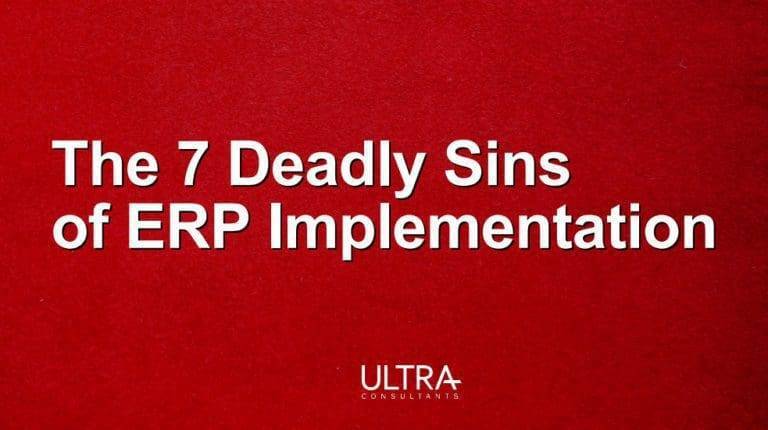5 Mistakes That Derail the ERP Software Selection Process
The enterprise software selection process is a long and complicated process – for several good reasons. The solution you choose will affect the way you conduct business for years to come, and it will impact virtually every function. It’s a significant investment, even with today’s cloud-based packages. And with approximately 75 percent of ERP implementations failing to achieve their goals, it’s critical to avoid ERP software selection mistakes.

Here are the top five mistakes that derail the enterprise software selection process:
1. Only Looking at Big-Name Solutions
Many organizations start ERP selection with a list of the biggest and best-known companies in the ERP software marketplace. The big-name vendors offer excellent choices for small, medium and large enterprises in a variety of deployment models. Their powerful products may not be right for your organization, however. Extensive customization may be necessary to meet the requirements of your industry and company. Or you may have to purchase specialized industry add-ons to get it to function the way you want. Instead, consider all the options available.
2. Not Evaluating Software Based on Business Goals
Many companies replace their enterprise software because it’s outdated or no longer supported by the vendor. While these are valid reasons to move to a new system, they shouldn’t be the only ones. The software selection process is the perfect time to evaluate business goals and map them to your new solution. For example, you may want to reduce operating costs or improve order accuracy. If you have these goals in mind, you’re better able to narrow down your choices and request relevant demos from vendors.
3. Thinking All ERP Solutions Are the Same
If you’ve ever bought a new car, you know that every model is different, even those built on the same platform. Each includes various features and benefits, including subtle differences in appearance. It’s the same with ERP software. At first glance, it may seem like two solutions are exactly alike. But once you look under the hood, you may learn that one is more powerful. As you test drive it with a demo, you may find that one is more comfortable. The differences often may seem small, but looking critically at them is the key to finding software that fits your business.
4. Creating an Extremely Detailed RFP
Many companies think they need to spend hours creating lengthy RFPs, which often amount to hundreds of pages. But since most vendor offerings address core problems, such as automating reports, these documents don’t need to be nearly as long. Instead, companies should look at the business problems they want to solve with the new software, not core functionalities that typically are the same across multiple vendors. It is more beneficial to create a shorter RFP that includes specific problem areas vendors need to address.
5. Forgetting to Involve Key Stakeholders
Companies need to get various viewpoints from across the organization when they gather requirements in the software selection process. All too often, important stakeholders are left out of the conversation. Before looking at different systems, assemble a team with employees from every department that uses, or will use, your ERP. Whether it’s accounting, sales, marketing, shop floor, warehouse, logistics, operations or any other department, it’s important to know what is causing problems and what they need to do their jobs better.

The 7 Deadly Sins of ERP Implementation
Table of Contents
More ERP material...
AI in Food and Beverage Manufacturing
Discover how AI is revolutionizing food and beverage manufacturing, enhancing quality, reducing…
How ERP for Quality Control Eliminates Manual Documentation Chaos
This post will examine why managing quality records outside of an ERP…
Assessing Your AI Maturity
This article breaks down how businesses can measure their AI maturity to…



